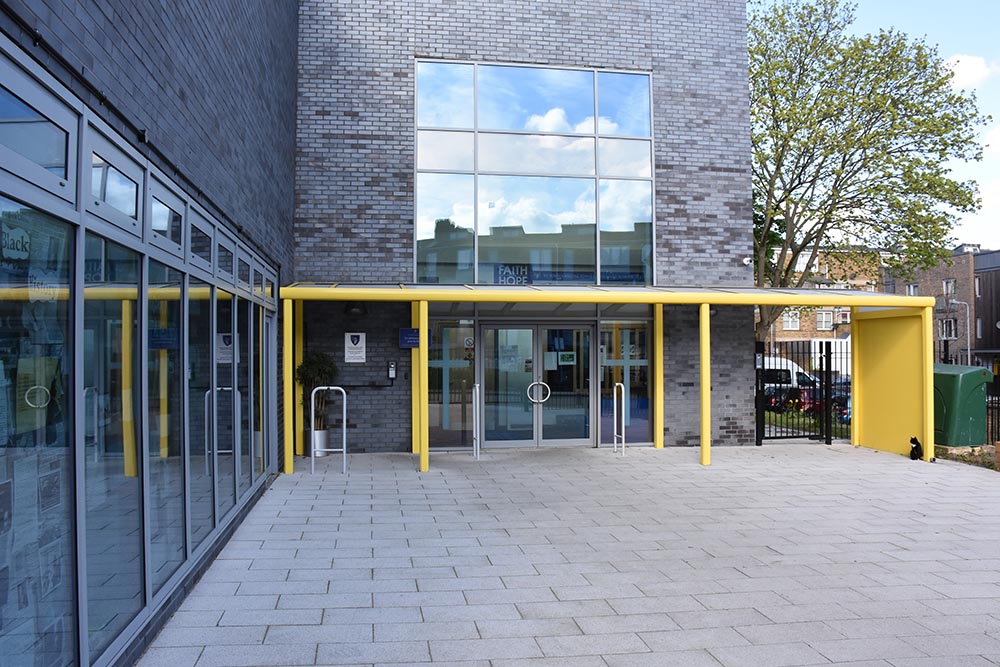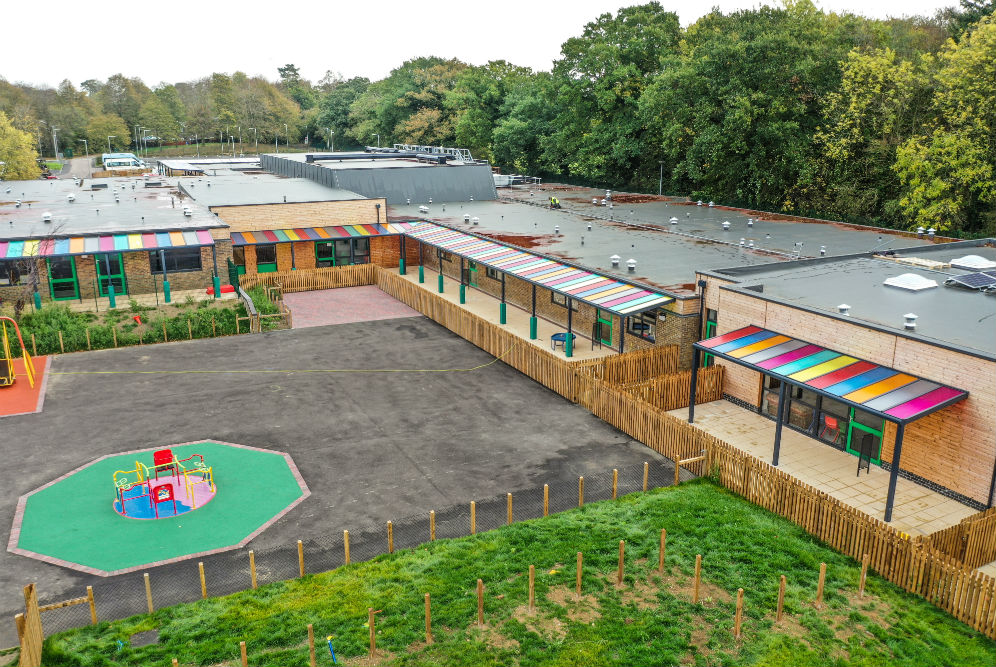
Four factors to consider when deciding on a school canopy
School canopy installations have become increasingly popular in recent years.
With class sizes increasing over the last decade, a number of schools have found themselves needing additional breakout spaces and learning areas to accommodate the addition of new students year-on-year.
Canopies provide an excellent and cost-effective solution to this issue.
However, choosing the right canopy can sometimes be a difficult decision. That’s why we’ve identified four of the key considerations when it comes to deciding on a school canopy.
Where is the canopy going to be installed?
The answer to this question will likely determine the type of canopy used for your project.
If it is being installed adjacent to the school building, then a lean-to canopy could be the best option. The direct fixing to the wall provides excellent shelter and it can help to reduce the effects of solar heat gain entering through the windows of the main building.
Furthermore, as a lean-to only requires posts and foundations on the front edge of the canopy, it can often prove to be the most cost-effective option.
But if the building cannot withstand the additional load of a lean-to canopy, then a free-standing mono-pitch canopy could be the way to go, as this can be installed as close to the building as possible with a weatherproof flashing covering the gap, if necessary.
If you’re looking to install a canopy away from a building or in a playground, then the decision will be between a free-standing mono-pitch and a free-standing apex roof. The difference between the two is in the maximum width they span to.
A mono-pitch can cover a width of up to 6m, whereas an apex roof canopy can shelter an area up to 12m. Both can be made to any length.
Framework material
Aluminium, steel and timber are the three most commonly used materials for canopy frames. And all three offer different benefits.
The most popular is aluminium. It’s what we usually recommend when working on a canopy for a school as it will never corrode or rust, so it represents the most durable and economical choice.
Aluminium is also the lightest material of the three. Therefore, it exerts the least amount of load on a building, which is important for lean-to canopies, and it’s the easiest to install.
Unlike steel frames, aluminium canopies are constructed from purpose made extrusions. This optimises the structural capacity of the frame and represents a more aesthetically pleasing option, as the fixings and gutters are integral.
That’s not to say a steel frame doesn’t have any plus points though. It’s an incredibly robust and strong material, meaning it’s less likely to succumb to damage in severe weather.
Timber frames meanwhile represent the most environmentally friendly option, which is an increasingly important consideration for new projects. Both timber and steel do require regular maintenance, however.
Roof panels
Laminated safety glass and multiwall polycarbonate are the two most frequently used materials for canopy roof panels.
The former has become increasingly specified on projects with a focus on sustainability. It can be easily recycled and complies with regulations regarding glass in public buildings.
Interestingly though, polycarbonate tends to be the choice most schools opt for. The panels are 16mm in thickness and are much lighter than glass, giving it the edge in the cost and safety departments respectively.
Choosing the colour of the roof is next on the agenda, and the discussion is usually whether to go for opal or clear.
Whilst clear offers a great view of the surrounding environment, it is also the more susceptible to any superficial damage or dirt, which is more effectively concealed by an opal roof.
Rainwater management
The final consideration is the guttering, and this will depend on the material of the framework.
Using an aluminium frame allows for the option to conceal the gutters and downpipes; something we would always recommend for schools.
Not only does this give the canopy a smart finish with no exposed pipes, it also eliminates the risk of any damage to the gutter or downpipes from ball games in the playground, for example.
Conclusion
Although your project could have one or two more specific requirements or things to consider, these are the four main factors we’d recommend thinking about when deciding on the right canopy for your school.
If you’d like to know more about the best type of canopy for any current or future projects, get in touch with us and one of our expert team can assist.




